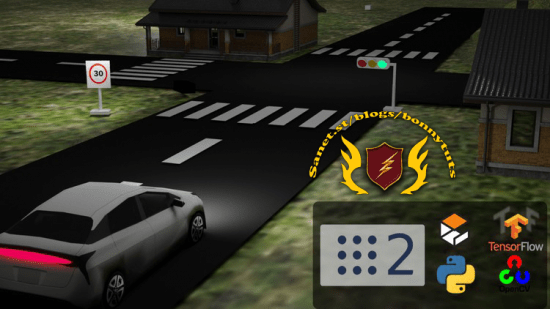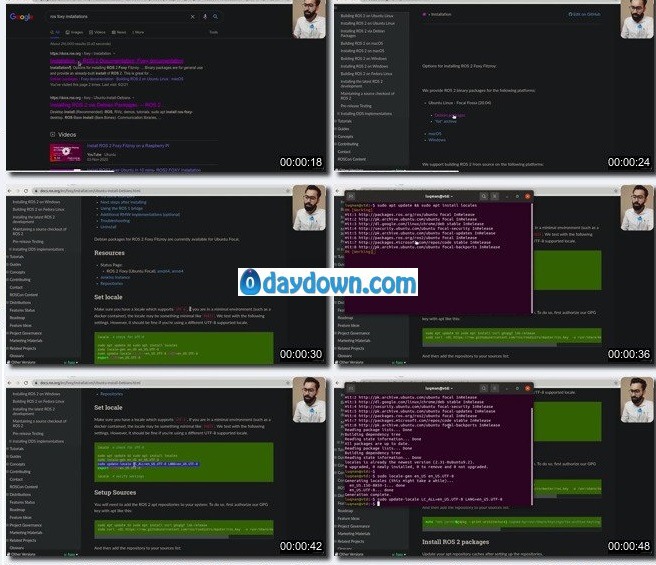
Last updated 7/2022
MP4 | Video: h264, 1280×720 | Audio: AAC, 44.1 KHz, 2 Ch
Genre: eLearning | Language: English + srt | Duration: 97 lectures (11h 2m) | Size: 9.72 GB
Autonomous Car using TensorFlow and Neural Networks for Beginners
What you’ll learn
Build your own Self Driving Car ? in Simulation (ROS2)
Learn to develop 4 Essential ? Self Drive features (Lane Assist, Cruise Control, Nav. T-Junc, Cross Intersections)
Master ComputerVision techniques ? e.g. (Detection, Localization, Tracking)
Deep Dive with Custom-built ?Neural Networks (CNN’s)
( NEW!!! ) Develop a Satellite Navigation System (i.e GPS ? ) that helps the SDC navigate to any desired destination autonomously. ?
Learn ?️♂️ how to utilize functionality provided by other repos for your needs through a Practical example.
Requirements
3D model’s STL files printing
Basic Python programming and OpenCV
Description
This is course is involves both the hardware and the software part for building your custom car
Topics Which Will be Covered in the Course are
Hardware Part
Raspberry Pi Setup with Raspbian
Raspberry pi and Laptop VNC Setup
Hardware GPIO Programming
Led Controlling with Python Code
Motor Control
Camera Interfacing Video Feed
Software Part
Video Processing Pipeline setup
Lane Detection with Computer Vision Techniques
Sign Detection using Artificial Deep Neural Network
Sign Tracking using Optical Flow
Control
Course Flow (Self-Driving[Development Stage])
We will quickly get our car running on Raspberry Pi by utilizing 3D models ( provided in the repository) and car parts bought from links provided by instructors. After that, we will interface raspberry Pi with Motors and the camera to get started with Serious programming.
Then by understanding the concept of self-drive and how it will transform our near future in the field of transportation and the environment. Then we will perform a case study of a renowned brand in self-driving (Tesla) ;).After that, we will put forward our proposal of which (autonomous driving level) self-driving vehicle do we want to build.
The core development portion of the course will be divide into two parts. In each of this portion and their subsection, we will look into different approaches. program them and perform an analysis. In the case of multiple approaches for each section, we will do a comparative analysis to sort out which approach best suits our project requirements.
1) Detection: responsible for extracting the most information about the environment around the SDV
Here we will understand how to tackle a large problem by breaking it down into smaller more manageable problems e.g in the case of Detection. we will divide it into 4 targets
a) Segmentation
b) Estimation
c) Cleaning
d) Data extraction
2) Control: actions will be performed based on the information provided by the detection module.
Starting by defining the targets of this module and then implementation of these targets such as
a) Lane Following
b) Obeying Road Speed Limits
In the end, we will combine all the individual components to bring our Self Driving (Mini – Tesla) to life. Then a Final Track run along with analysis will be performed to understand its achievement and shortcoming.
We will conclude by describing areas of improvement and possible features in the future version of the Self-driving (Mini-Tesla)
Hardware Requirements
Raspberrypi 3b or greater
Geared Dc motors 12V (single)
12V lipo Battery
Base of car + steering mechanism
Software Requirements
Python 3.6
Opencv 4.2
TensorFlow
Motivated mind for a huge programming Project
– Before buying take a look into this course Github repository or message
( if you do not want to buy get the code at least and learn from it ? )
Who this course is for
Self Driving Cars Enthusiasts looking to build one of their own
Engineers wanting to embark in the fields of Computer Vision, Artificial Intelligence and Robotics
Password/解压密码www.tbtos.com
转载请注明:0daytown » ROS2 Self Driving Car with Deep Learning and Computer Vision
